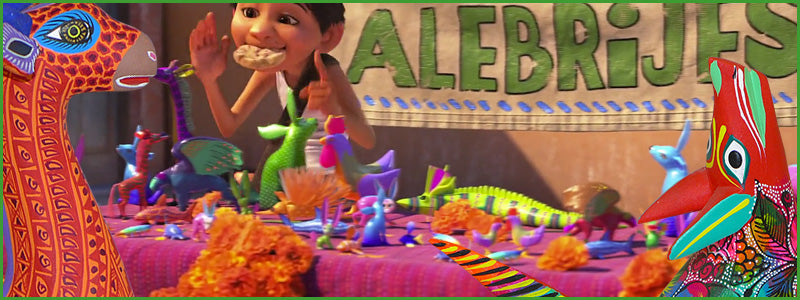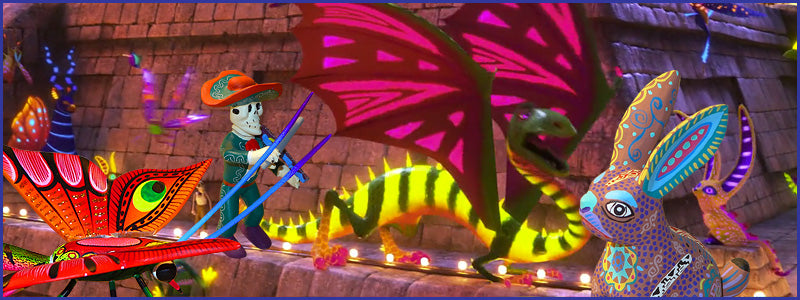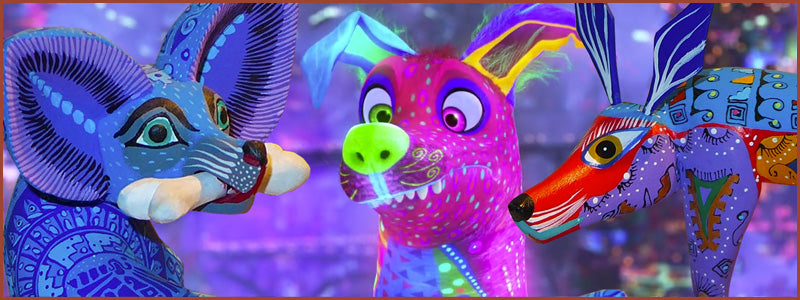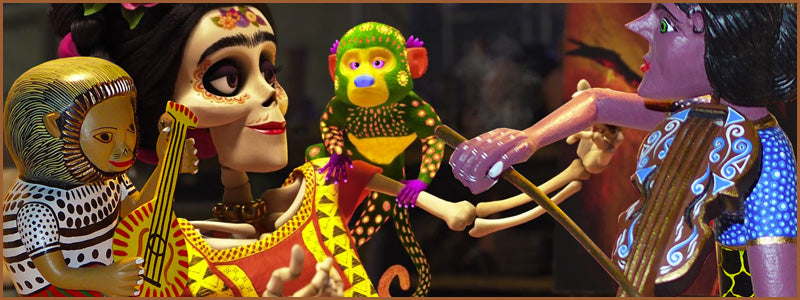Coco Brings Alebrijes to the Big Screen in Epic Fashion


Coco is an endearing story we’ve recently enjoyed that features a subject near and dear to us ‘Alebrijes’. Innocently featured in the start of the movie they are displayed as you would see them at a market similar to Ocotlán de Morelos or at the entrance to Arrazola. Familiar Giraffes, Rabbits, Roosters, Lizards, and Fish can be seen on the table. In a tourist tienda the term Alebrijes or Alebriges would be used to describe the carvings. In an individual artist studio Animalito would be used if animals are their specialty. If you were to do an Alta Vista search in the 1990’s for Alebrije you would get links to Star Wars websites in Spanish. But we digress let us get back to the story.
The really neat thing that happens in Pixar fashion is when our protagonist goes to the underworld in Beetlejuice style the Alebrijes become animated alive. Described by one of the denizens as ‘spirit guardians’ these creatures act as guides or messengers between the living and the dead. This harkens back to the Popol Val or Zapotec folklore describing certain animals like owls that have that ability. Once in the underworld Mayans describe large rivers to cross that only the resident dogs on the shore may ferry you across. It’s fascinating how the movie and Mexican folktales we’ve heard for 25+ years blend together.
Ultimately the story is about creating an understanding for how Mexican cultures celebrate lost loved ones once a year. If it were a uniquely Oaxacan tale you couldn’t leave out the animal shape changer nahuals of San Martin Tilcajete and their amazing ability to play instruments. Alongside the skeletons would be a large population of red devils as they often outnumber skeletons in villages like La Union. It’s almost impossible not to shed a tear at the end but all in all a happy movie. A movie we wouldn’t mention had it not featured our decade after decade spanning endearing friends the Alebrijes. We haven't cried in a movie for ages. Fun for all ages. Oh yeah, and many of the carvings are found in our hundreds of different Alebrijes, Animalitos, Festivos, and Nahuals spanning the villages of San Antonio Arrazola, San Martin Tilcajete, La Union Tejalapan, San Pedro Cajonos, Ocotlán de Morelos, San Pedro Taviche, and Oaxaca City.

